Hamilton PSR, Reviving the First-Ever Digital Watch
Back to the future with the re-edition of the iconic Hamilton Pulsar.
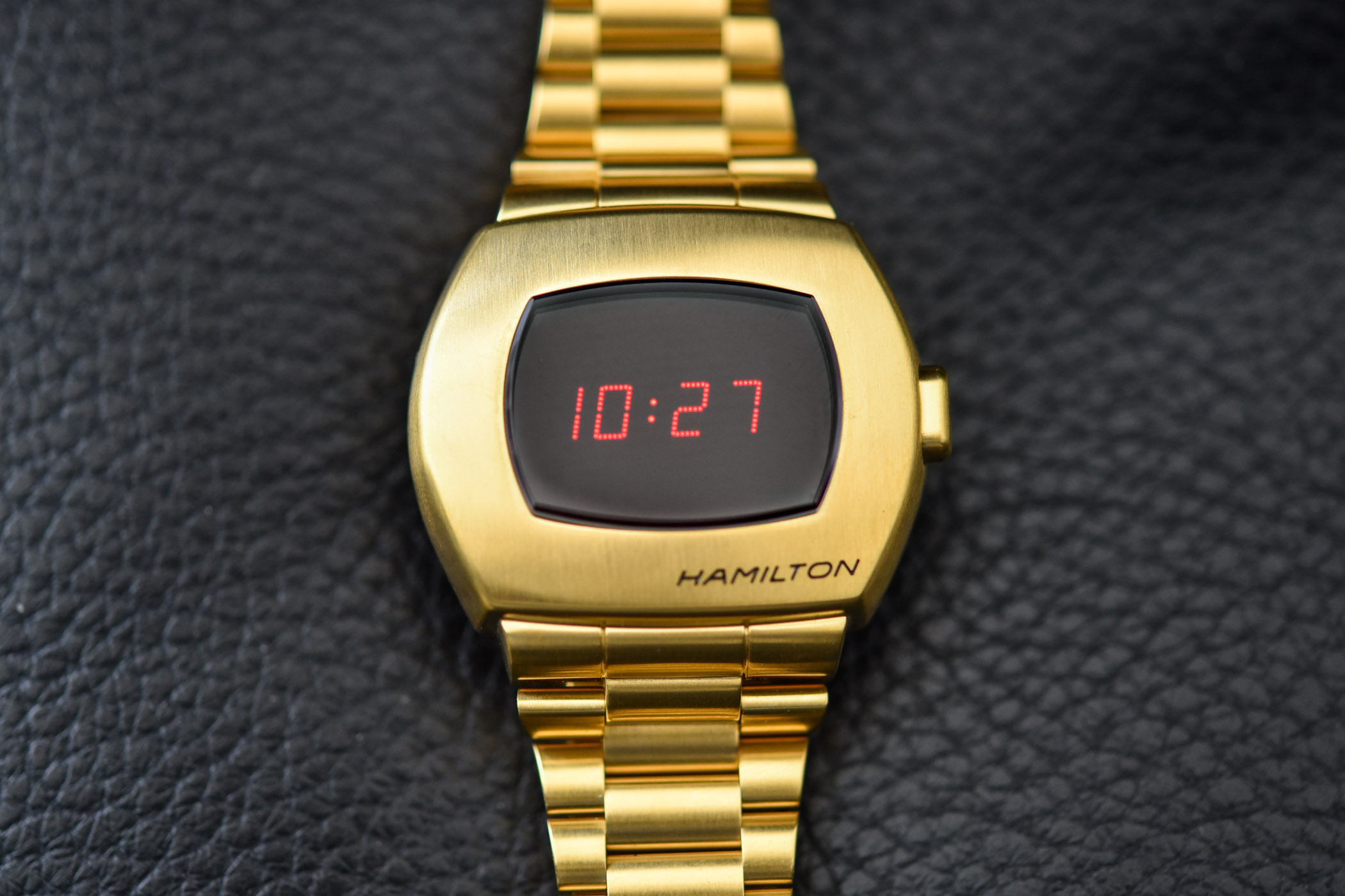
The 1970s was a decade of revolutions. The world made huge strides creating some of the most impactful inventions coupled with striking designs. Well, if you are 1970s-ready and seeking a healthy dose of nostalgia, Hamilton celebrates the 50th anniversary of the world’s first digital watch, the Pulsar. And it does it by re-editing this model in a very faithful way. Meet the brand new Hamilton PSR watch…not usual MONOCHROME material, but pretty groovy!
The 1960s and 1970s were an era of rapid advancements in technology and the advent of electronics sparked a revolution in watchmaking. The first electric wristwatch was presented in 1957 by Hamilton; the 500 series was available in multiple cases, including the iconic Ventura. Although quartz technology had already been in use for several years for large precision clocks, the real challenge was to miniaturize this technology. In the 1960s, Swiss, American and Japanese watchmakers embarked on a race to develop the first applications of quartz technology for the wristwatch.
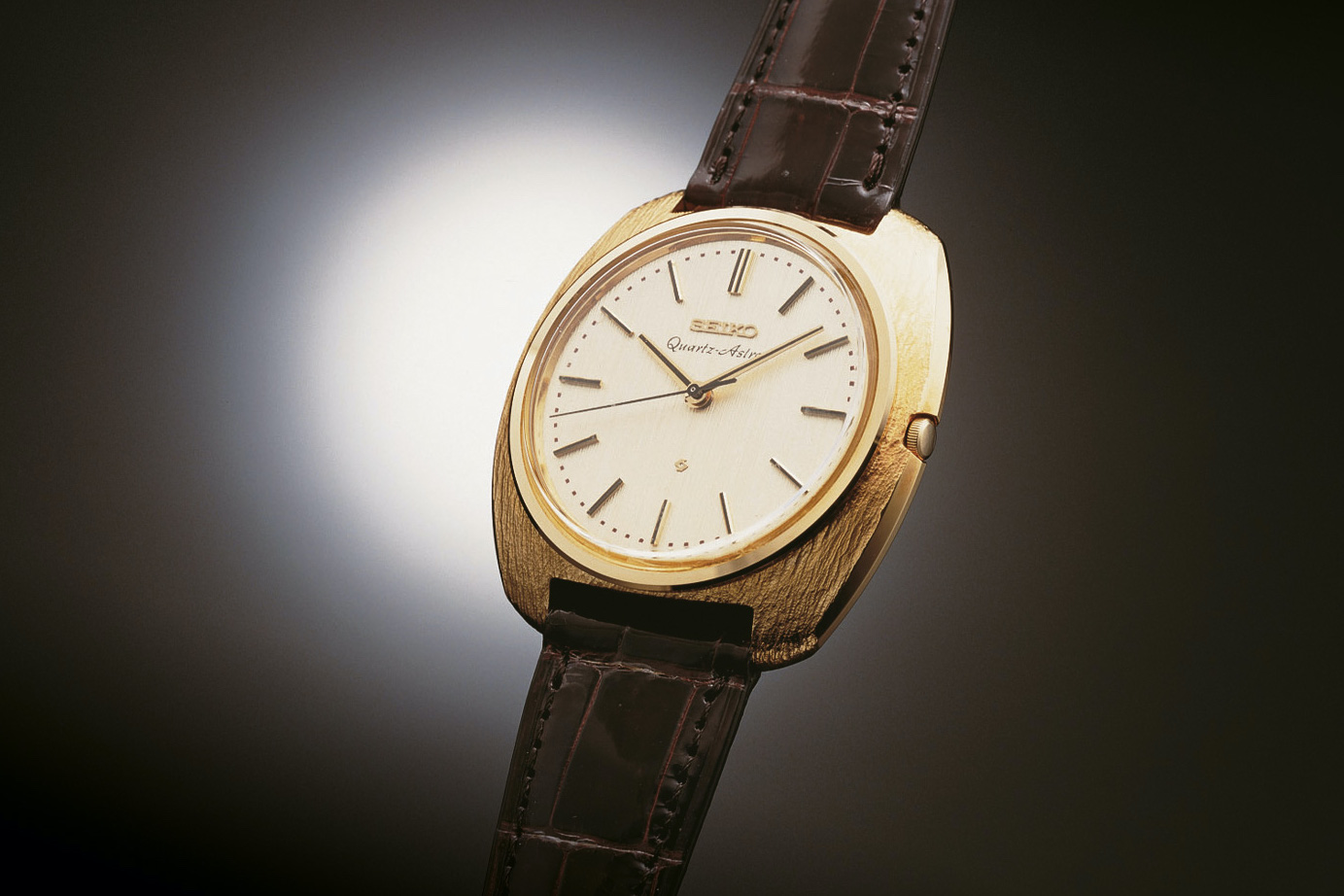
Swiss watchmakers undertook combined research via the Swiss Watchmaking Research Laboratory (LSRH), and then with the Watchmaking Electronics Centre (CEH) from 1962. This consortium presented the first prototype quartz wristwatch in 1966. But the first quartz wristwatch to hit the market came from Japan. In December 1969, Seiko announced the launch of the Astron. Just a few weeks later, several projects were presented at the 1970 Basel fair: the Swiss Beta 21 (CEH consortium), the Longines Ultra-Quartz, the Girard-Perregaux Elcron…
Welcome to the digital age
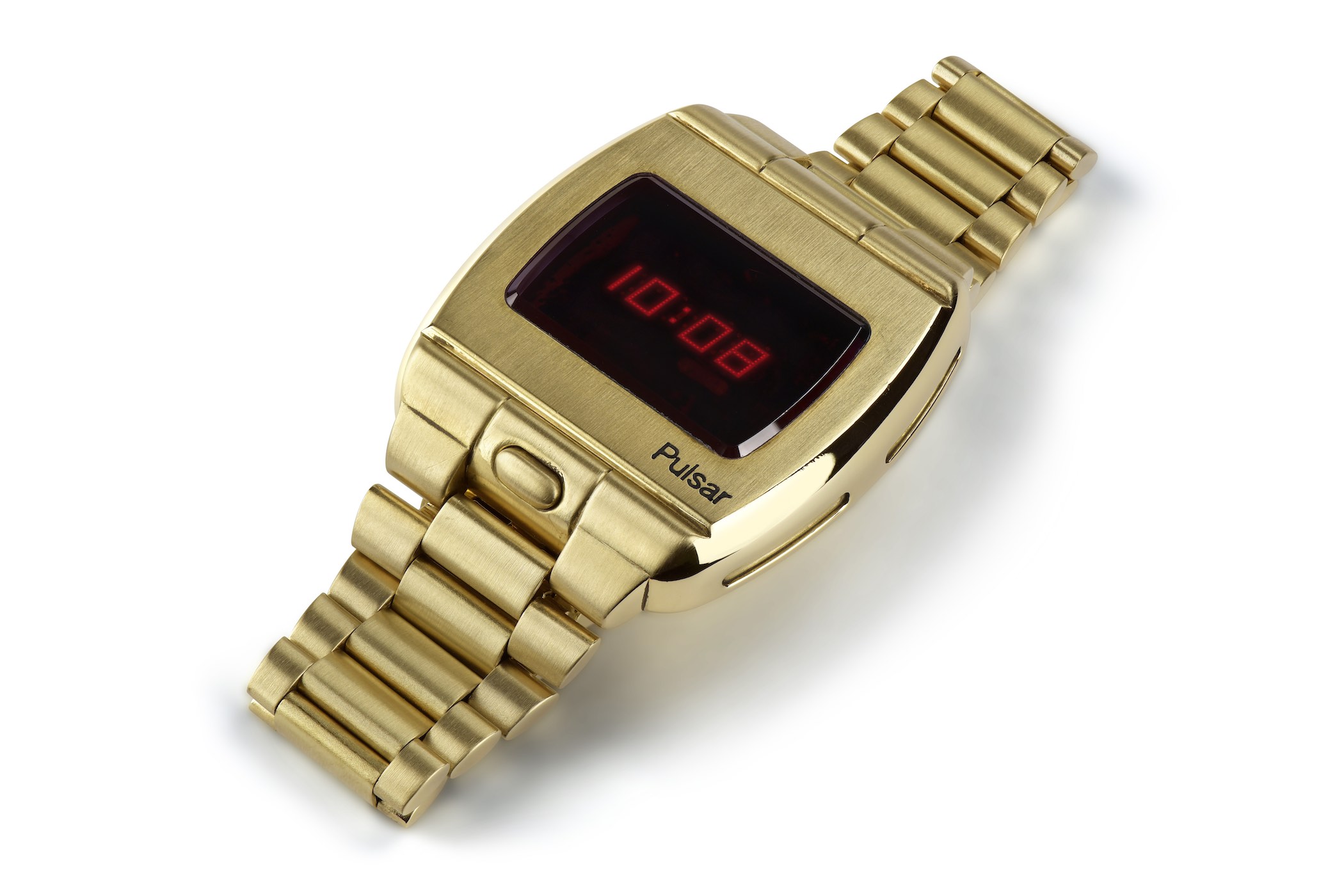
May 6, 1970, was one of the moments that defined the seventies design. A watch like no other watch before was presented during a press conference in New York City. Not only was the Hamilton Pulsar powered by a quartz movement but it had no moving parts, no ticking sound. This “solid state wrist computer no larger than a wristwatch“, had no hands and no dial, replacing these with a digital display. The Pulsar was straight out of science fiction with its space-like design and unique functionality. Pushing a button made the time flash in red LED (Light Emitting Diodes) numerals on the dark screen. Holding the button for longer revealed the passing seconds. The LEDs consumed so much power, that to avoid depleting the battery, the time could not be displayed permanently.
The Pulsar was developed by Hamilton in partnership with Electro/Data, Inc. It was named after the pulsating neutron stars that emit beams of radiation at ultra-precise frequencies. The first Hamilton Pulsar, the P1, made it to the market in 1972. A limited edition of 400 pieces with a yellow gold case and bracelet was launched; it initially sold for USD 2,100, about 10 times the price of a Rolex Submariner or the price of a family sedan. The command button was located at 6 o’clock and the crystal was made of synthetic ruby. Inside was a 25-integrated-chips quartz movement running at 32,768 Hz and accurate to 60 seconds per year.
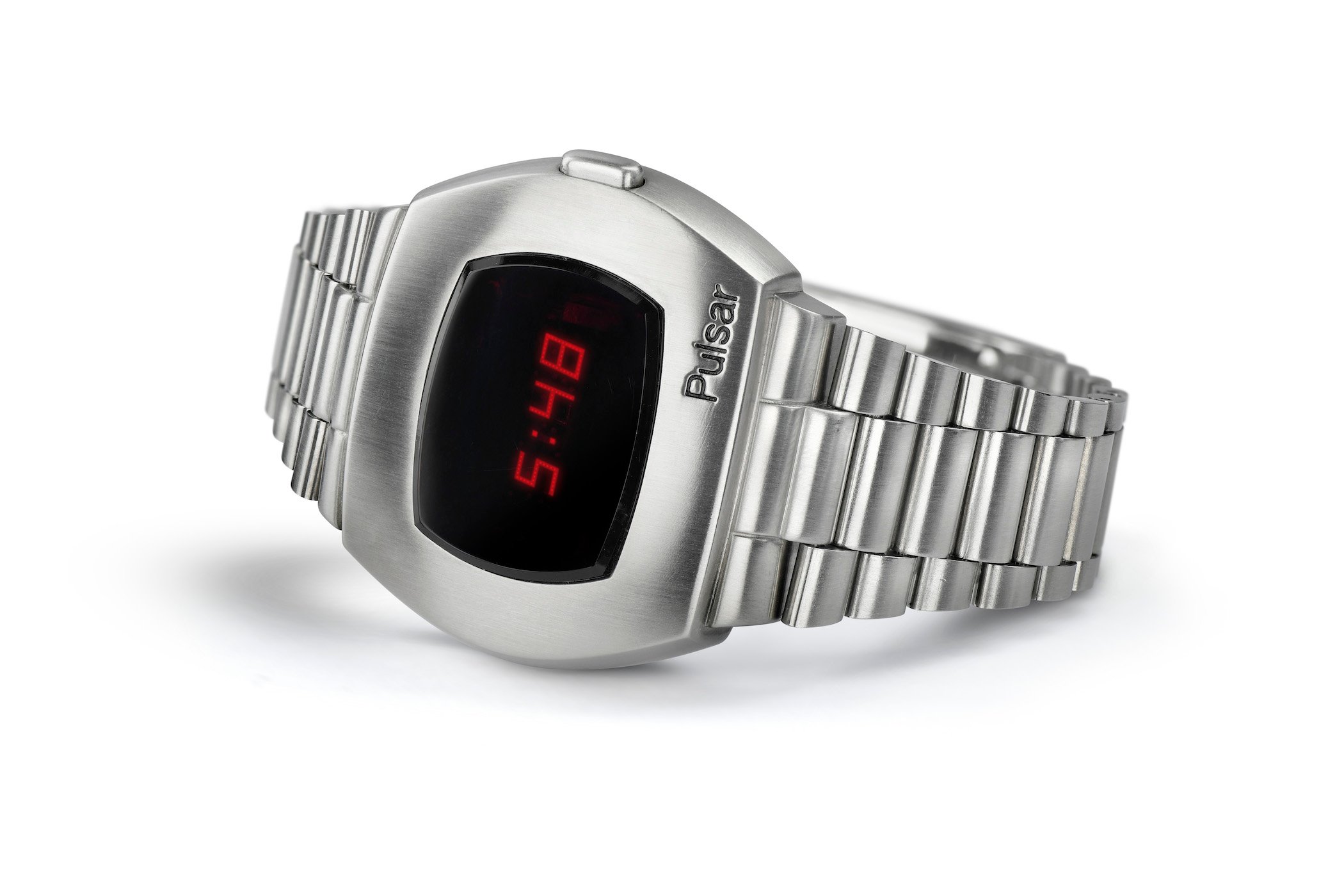
In late 1972, the Hamilton Pulsar P1 was replaced by the P2, which featured an improved electronic module and a more rounded case with the push-piece on the side. It was released in different materials, in much larger quantities and enjoyed commercial success. It was the model that Roger Moore wore in the first scene of James Bond – Live and Let Die. Among those to wear it were Keith Richards, Joe Frazier, Elton John, Giovanni Agnelli and US President Gerald Ford.

In 2010, Hamilton launched the Pulsomatic to mark the 40th birthday of the first digital watch. This digital timepiece features a liquid crystal display powered by an automatic movement.
An icon Revived, the 2020 Hamilton PSR
For the 50th anniversary of this milestone, the brand now releases a modern take on the Hamilton Pulsar P2, upgraded with modern technology: the Hamilton PSR. The rounded cushion-shape case comes in the same dimensions as the original, meaning 40.8mm x 34.7mm. The crystal that protrudes from the case is now fashioned out of sapphire instead of mineralite on the 1972 model. The name Pulsar engraved on the case of the P2 has been replaced by Hamilton, as the “Pulsar” brand no longer belongs to Hamilton but was purchased by Seiko. Last, the screwed caseback is engraved with a Pulsar star and the water-resistance is now of 100m – vs. 30m for the Hamilton Pulsar P2.
One of the main differences with the P2 is the time display. The Hamilton PSR features a hybrid reflective LCD (Liquid Crystal Display) / emissive OLED (Organic Light-Emitting Diodes). The LCD display ensures that time is also permanently visible in daylight conditions. Pressing the button on the side of the case brings up high-contrast red OLED numerals in the familiar “digit dot” style. With no display backlight, the energy consumption is low and the battery life is of 5 years!
The innovative display is the subject of a patent application. It has been developed with Asulab, the Swatch Group corporate research and development laboratory. It is manufactured with another Swatch Group company, EM Microelectronic in Marin.
The new Hamilton PSR is available in two versions. The first is a classic brushed stainless steel case and bracelet edition (ref. H52414130), the second is a very 1970s model with a yellow gold PVD-coated stainless steel case and bracelet (ref. H52424130), which is a limited edition of 1,970 pieces.
We usually don’t cover quartz watches on MONOCHROME but the Hamilton PSR does deserve an exception: the Hamilton Pulsar was one of the coolest watches ever and, as the first digital watch ever commercialized, it is also historically important. As such, this Hamilton PSR will be a bit of a piece of history on your wrist.
Price and availability
The Hamilton PSR will be priced at CHF 745 or USD 745 for the stainless steel version and CHF 995 or USD 995 for the limited gold PVD-coated edition. The watch will be available as of May 2020.
For more information, please visit www.hamiltonwatch.com.

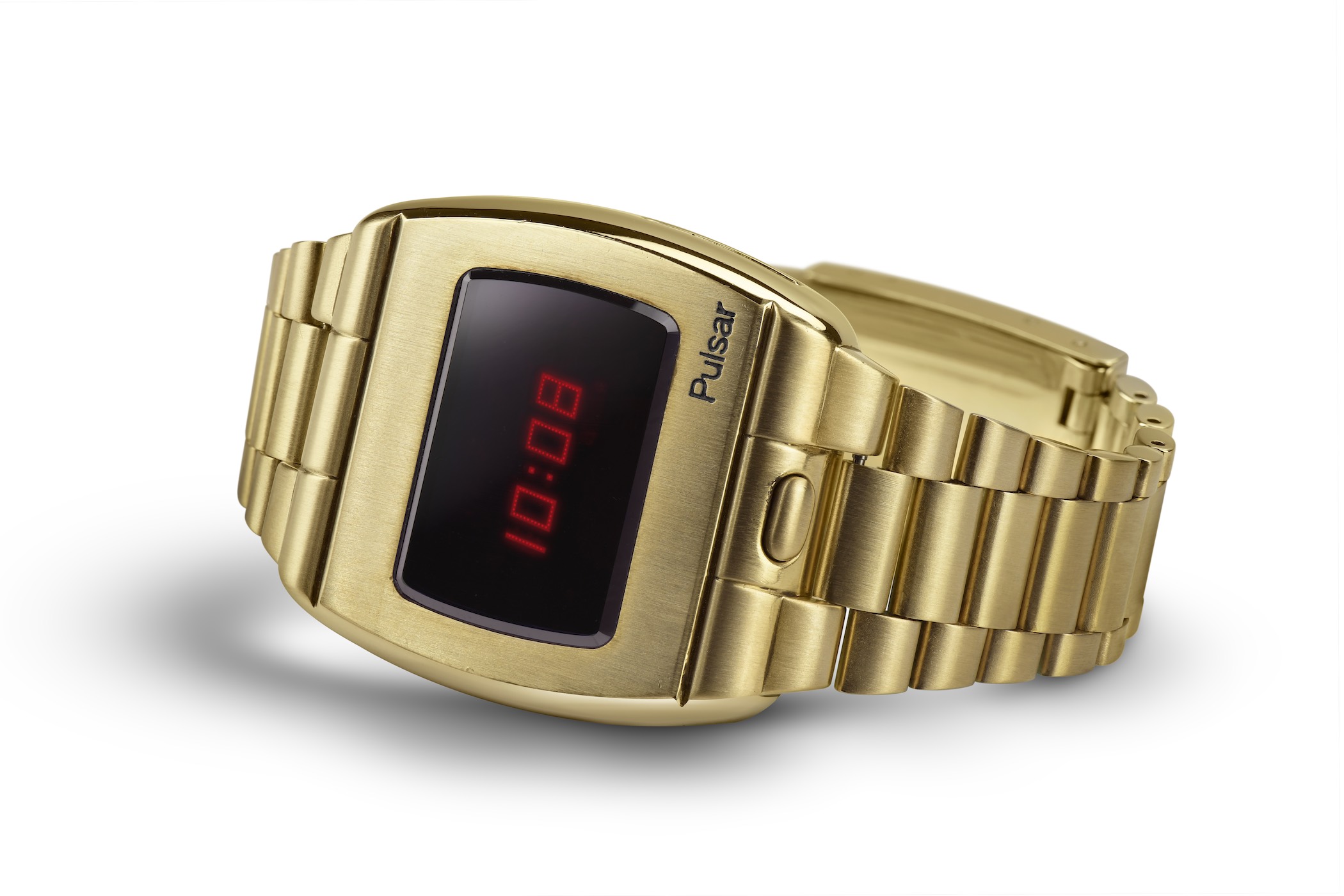
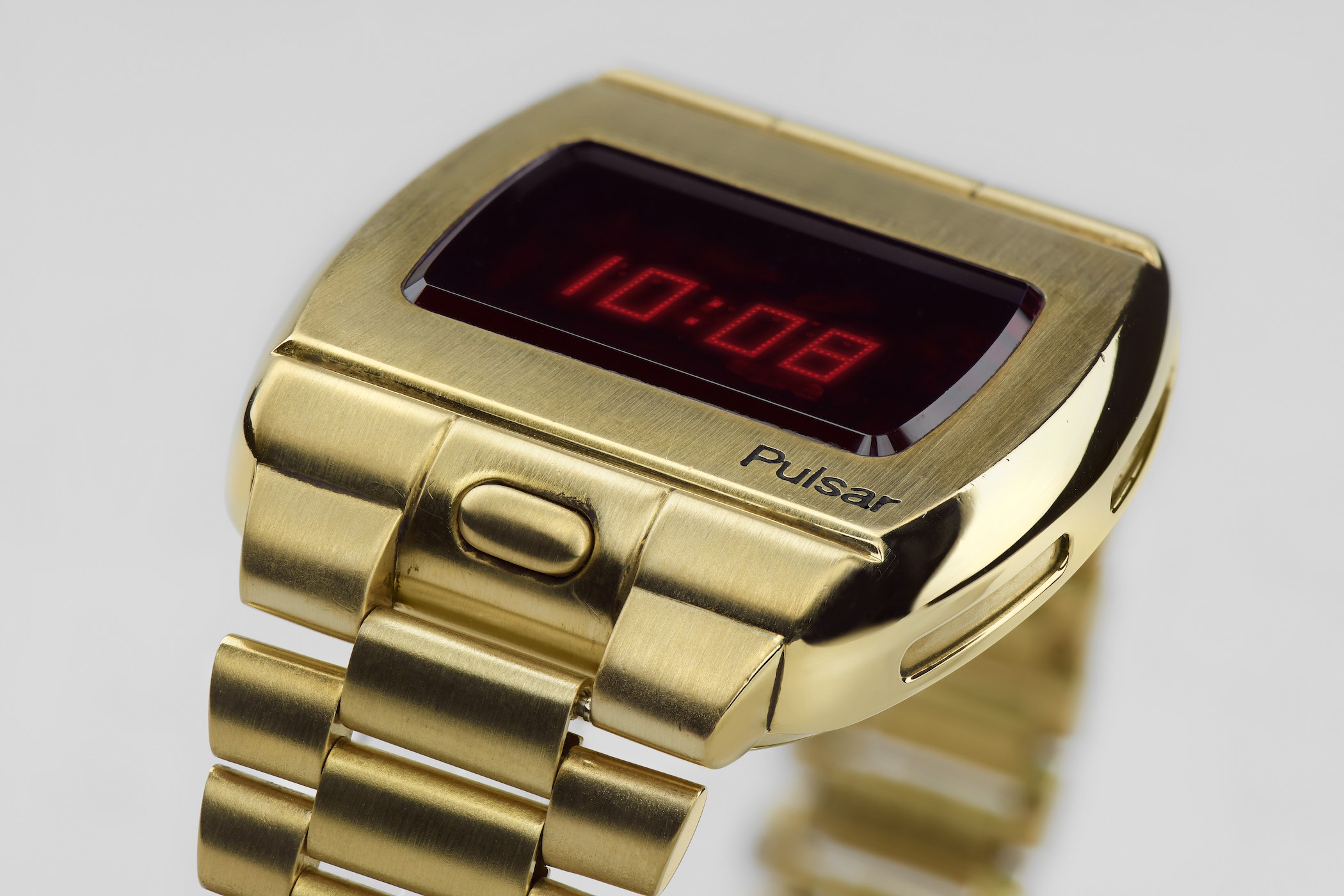
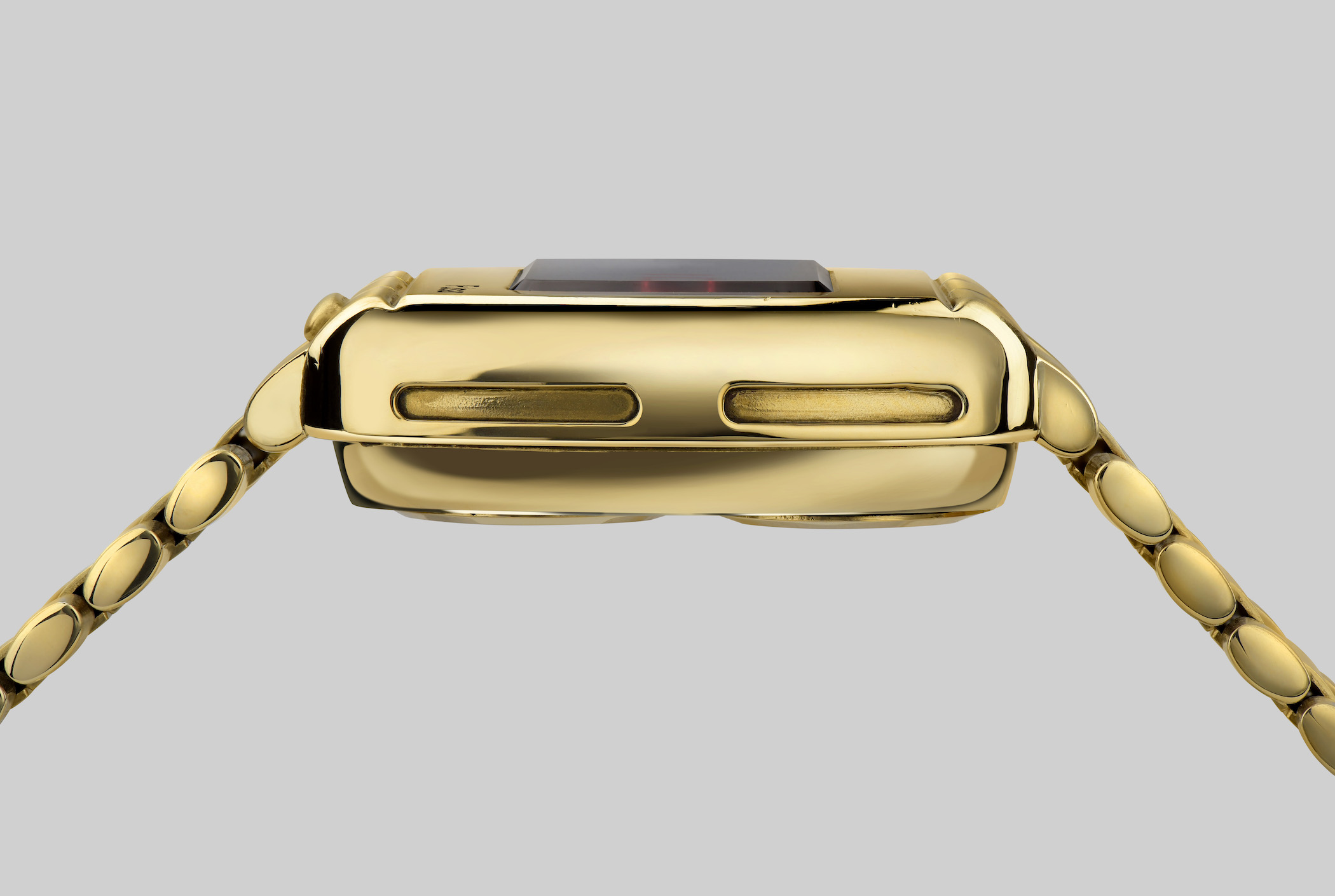
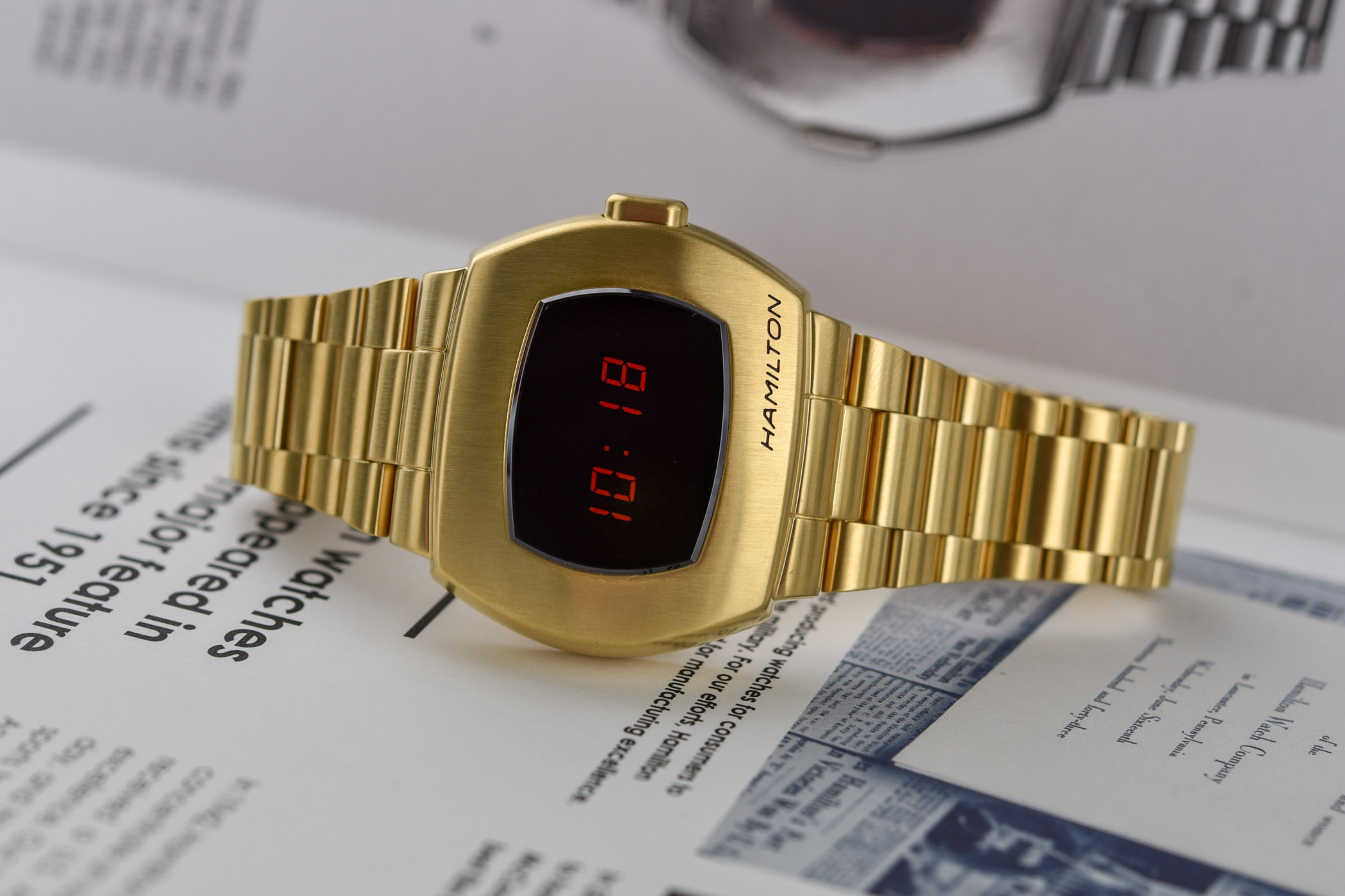


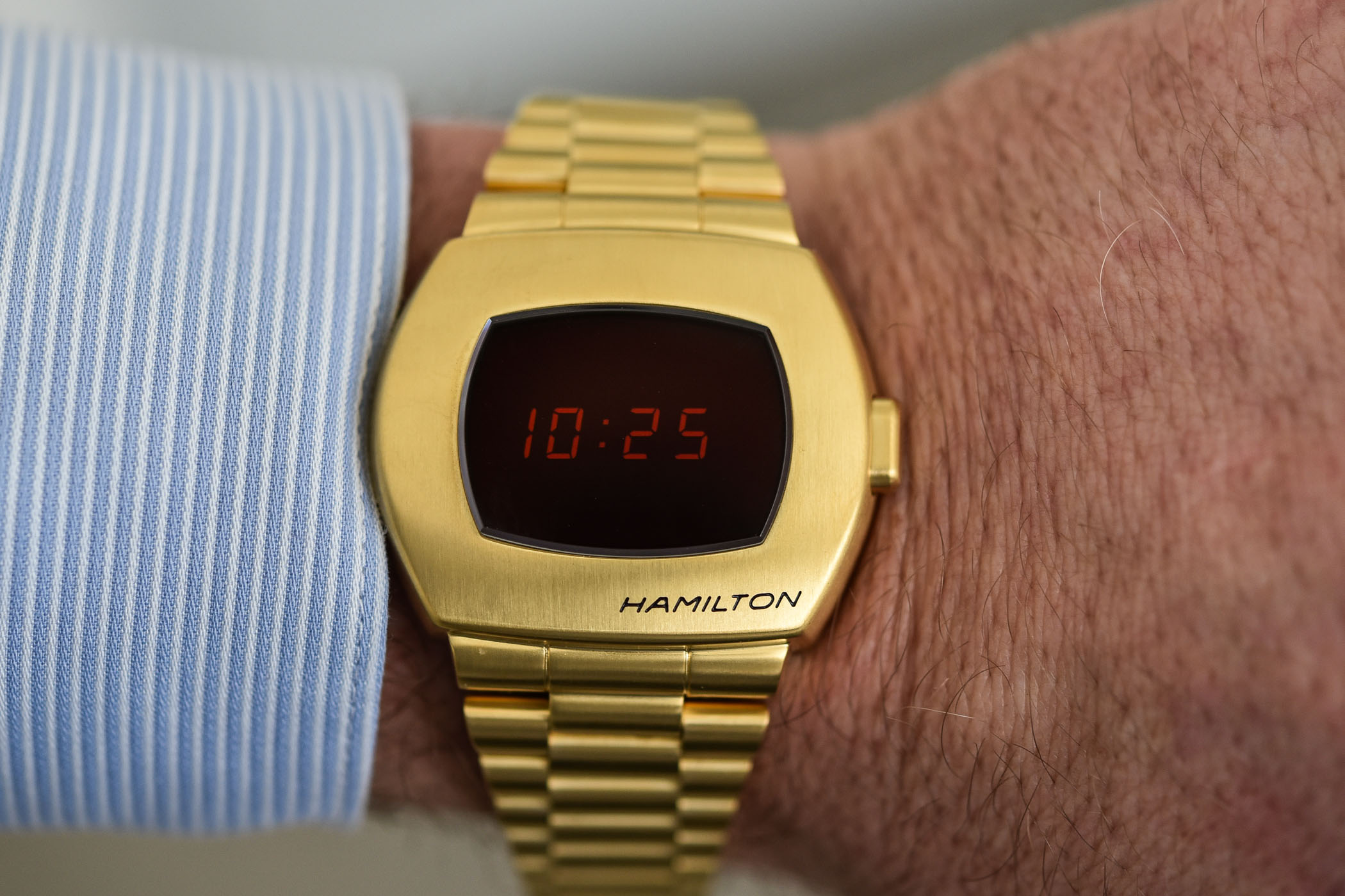

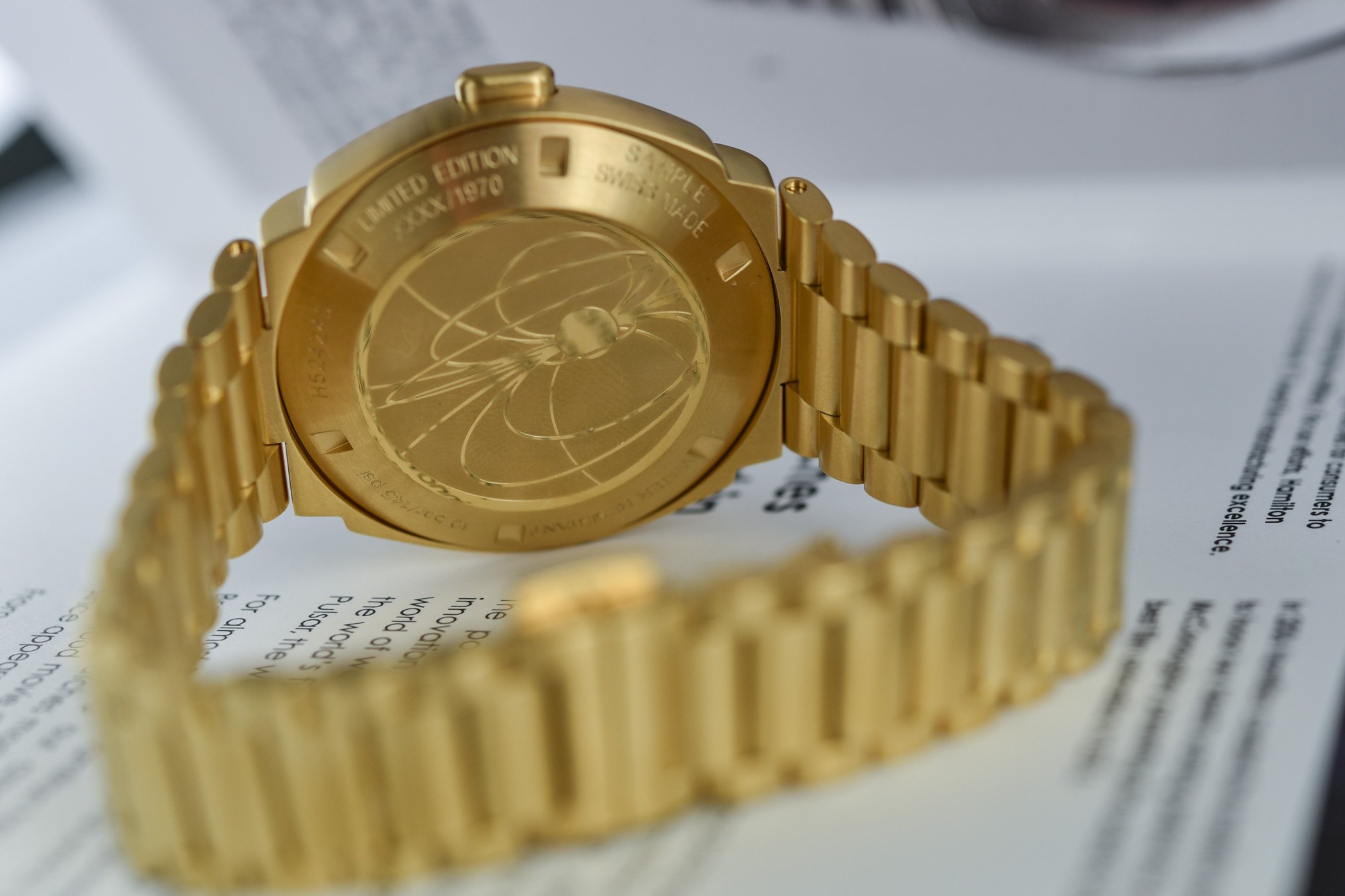

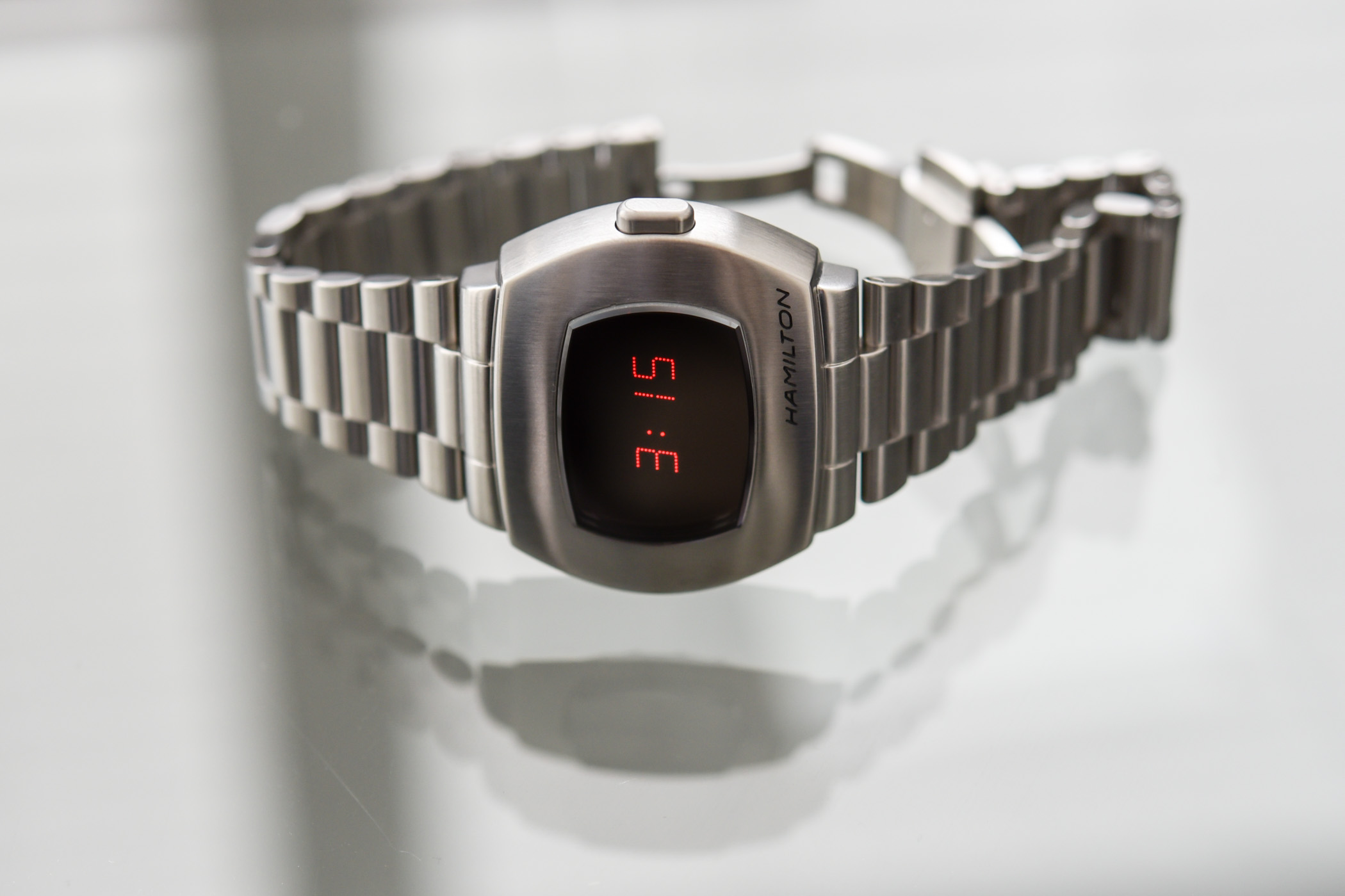
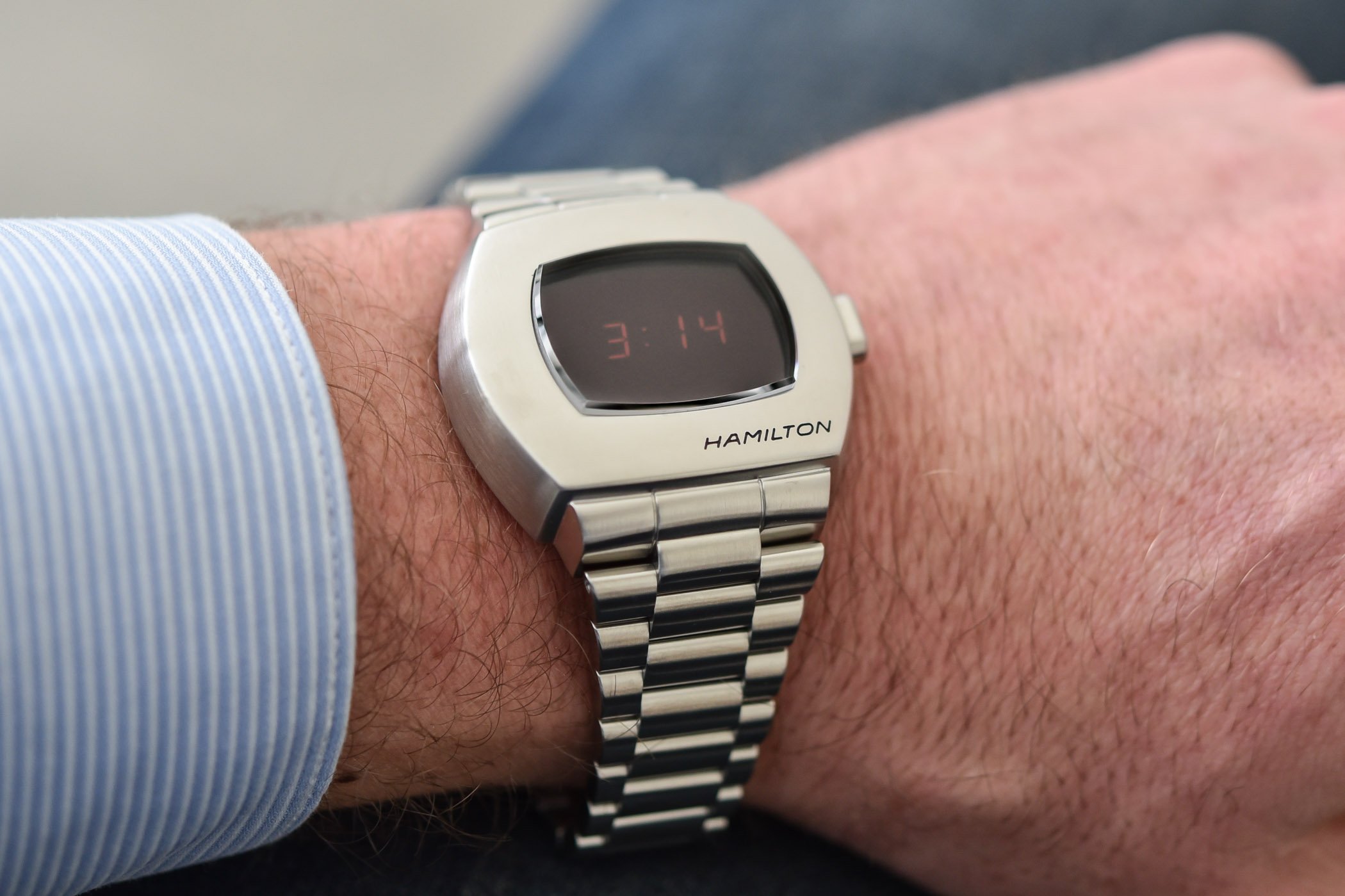
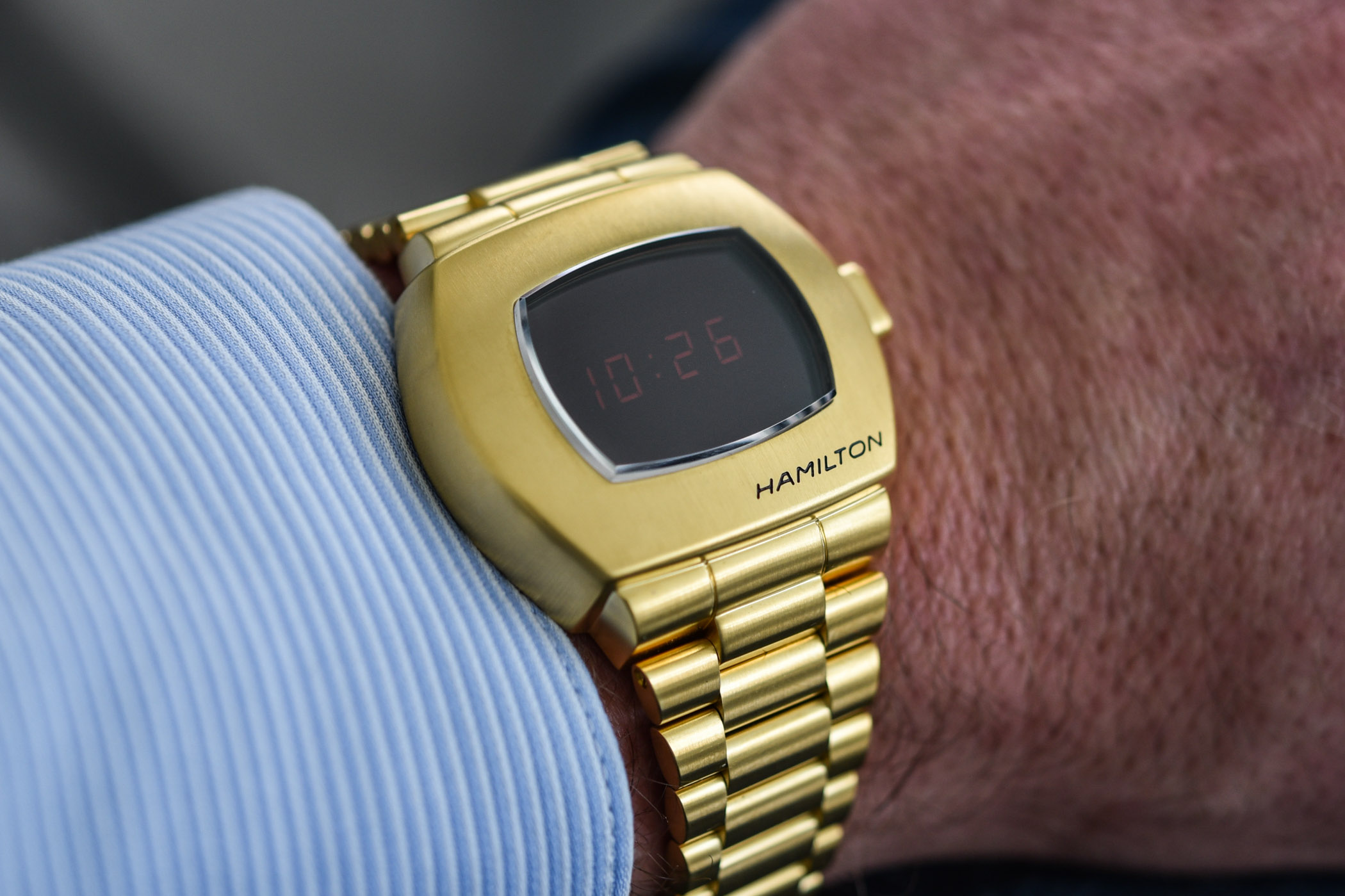



11 responses
I bought one of this style of thing when they first came out, cool and trendy. It was not long before I was back using a hand wind watch . When you want time at a glance nothing beats analogue. If you want quartz then there is endless choice at every price point. Next I will be getting rid of my car and buying a horse
Wow..I remember watching this movie when it came out and thought at first the Pulsar watch was just a movie prop due to the printed message strip that came out of it. But late in the era I actually bought a Seiko digital watch,one of many sadly…But like all James Bond movies his go to watch of course was the Rolex Submariner…Super Cool…..
Good comments Phil. I liked the one about getting a horse.
I inherited my dad’s 1976 Pulsar Classic Auto Command gold-filled LED watch about 30 years ago. You could either press a button to activate the display or flick your wrist and the time would turn on due to the internal mercury switch. Sadly, the watch was lost in a tornado that took my house in 2013.
That’s terrible, Mike, what a loss altogether. Hope you’ve been able to enjoy it before losing it in such a horrible way.
Is the gold PVD model on the market yet? I can’t find any for sale online. Thanks
Hi Grant, to be honest I have not followed when this would be released. I was expecting this one to sell- out fast. I am going to try to call the brand next week and will get back to you if I can get information… enjoy the weekend!
@grant there are a few watches left in some countries – so either try different shops or reach out to the brand in Switzerland, hopefully they will be able to help.
My dad has the gold one from 1970-73 and we would like to find out if there is someone who could service it and help him get the right kind of batteries. He threw the old one out and can’t remember what kind the battery was. He used to buy silver oxide type batteries. He thinks the motor or “works” number is 301. Any help you can provide would be appreciated.
Hello Susan, I would advise to contact directly a hamiltons service center. If you have difficulties finding one in your country let us know.
Hamilton’s improved reenactment of the original P2 shows that a wristwatch, for practical use, should only be, as it was in the beginning, a device ONLY TO TELL THE TIME. The P2 was perfect as an evolutionary advance in this regard with an unprecedented Light Emitting electronic display. No moving parts.
Even today, the PSR is the ultimate wristwatch, as before, surpassing analog displays, gears and springs, and their inferior accuracy. The P2 should have never been shelved, it should have been maintained as a staple of what a wristwatch was meant to be, TO “TELL” THE TIME.
Absolutely no bells and whistles, nothing extra (no calendar, chrono, alarms, etc.). If you want the extras, then buy another watch and use it for the occasion as it presents itself.